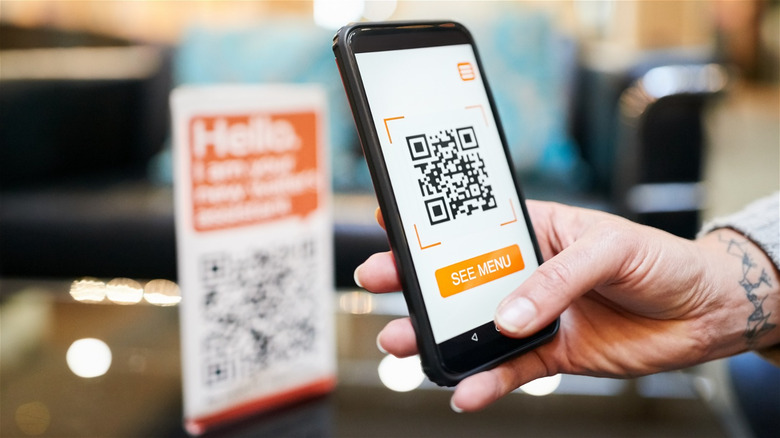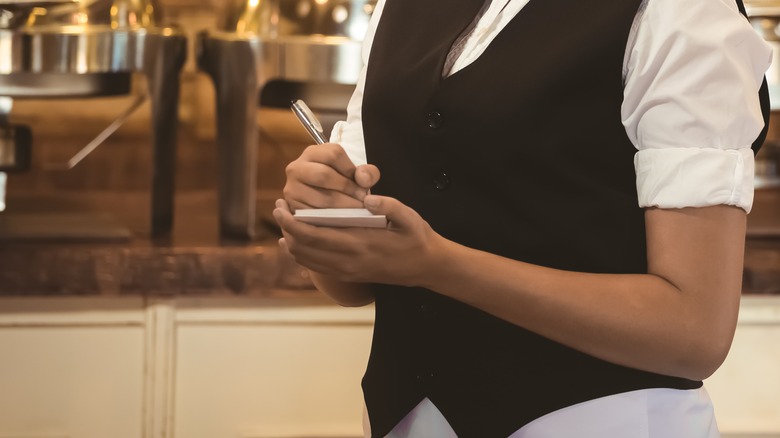Why Restaurants Are Beginning To Axe QR Code Menus
In late-2020, when Veda, an Indian restaurant in Philadelphia, re-opened, the QR code menu offered Covid-conscious patrons a way to order and pay without having to touch a previously handled menu or exchange money or credit cards. Less than a year later, they had stopped using it. "The older customers didn't like it," says Kiran Sodhi, assistant general manager at Veda. "Often, they don't have a smartphone or they are not comfortable with the technology."
Veda is not alone. Despite their initial embrace of the QR code, restaurants nationwide are now abandoning what many thought embodied wave-of-future dining. Most people believed that QR code menus were here to stay because they offered a lot of flexibility and cut some costs for restaurants. But as it turns out, diners dislike the process so much that it was actually costing the restaurants money.
Sodhi understands the decision to stop using the QR codes. "When people are dining out, they want to enjoy the experience. Perhaps people like the physical interaction with the server rather than a digital menu, which may be reminiscent of Covid days," says Sodhi. Most people agree that it's impolite to take out your phone while dining with others. Staring at your phone destroys the intimacy of a night out, and takes the diner's attention from the conversation. People tend to order less because they don't want to get their phones out and start the scrolling process again to add another glass of wine or a dessert.
Many patrons and servers prefer a paper menu
In addition to its value as a contact-free method for ordering and payment during the pandemic, the QR code was also designed to provide some relief to wait staff, especially considering there was a shortage of restaurant employees. Unfortunately, servers did not find it helpful.
On social media, restaurant employees are taking the side of paper menus – for their patrons and themselves. On Reddit's TalesFromYourServer page, the majority of commenters said they found it acceptable to use a QR code for ordering take-out or delivery, or even for paying the check in a restaurant, but not for ordering food while dining in. Servers found that customers prefer to peruse offerings on a paper menu than to navigate a small screen, especially older customers who might not own or know how to use a cell phone. And servers found it difficult to understand diners' body language when their attention was focused on their phones.
For many, a meal in a restaurant is a chance to escape from the increasingly digital world we live in: to have a conversation with a friend or engage with a server in a familiar place. The backlash against the use of QR codes shows us that this is still the case.

